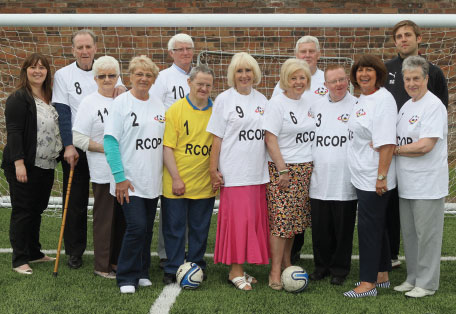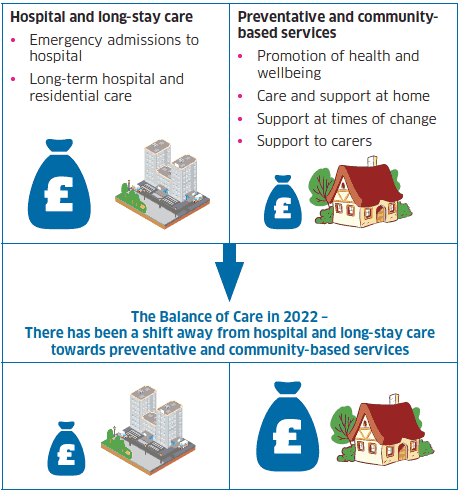Reshaping Care for Older People 2011 - 2021
A short, plain English summary of the Reshaping care for Older People Programme, to accompany the publication of our update paper, 'Getting On'.
What does Reshaping Care look like?
This means moving away from 'institutional' care towards care in the home or a homely setting that is designed around the needs of the individual.
To do this, we will follow a small number of key principles:
1. Personalisation. Service users and carers must be at the centre of what we do. We recognise that older people are a diverse group of individuals with their own cultures, needs and choices.
2. Independence. Where possible, we need to make sure older people are supported to live independently, preferably in their own home. But if they do need a care home or hospital, it must meet their care needs. Introducing choice adds to a person's independence and gives them ownership of the decision. For example, the individual chooses their own care provider.
3. Control. Rather than having decisions made for them, we want older people who require care services to make their own decisions.
This means public services having regular conversations with the people who receive services, and checking that our policies and strategies are in line with what people say they want.
In practice, the diagram on the following page shows the change we want to see.
The money currently spent on hospital and long-stay care won't disappear or become 'savings'. Instead, it will be used to provide care services and to support carers in more homely settings, such as people's own homes.

Source: NHS Lanarkshire
The Balance of Care in 2012 - Most money was spent on hospital and long-stay care

Contact
Email: Alan Martin
There is a problem
Thanks for your feedback